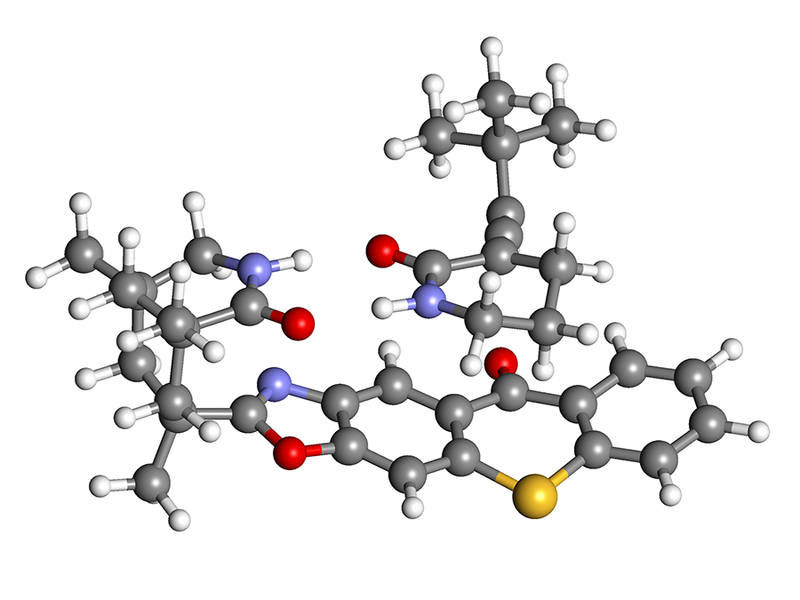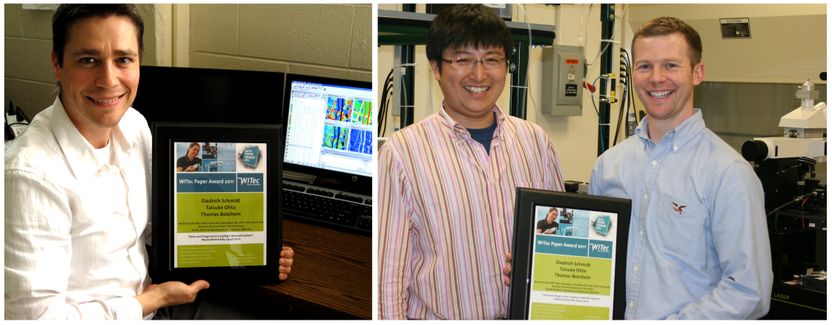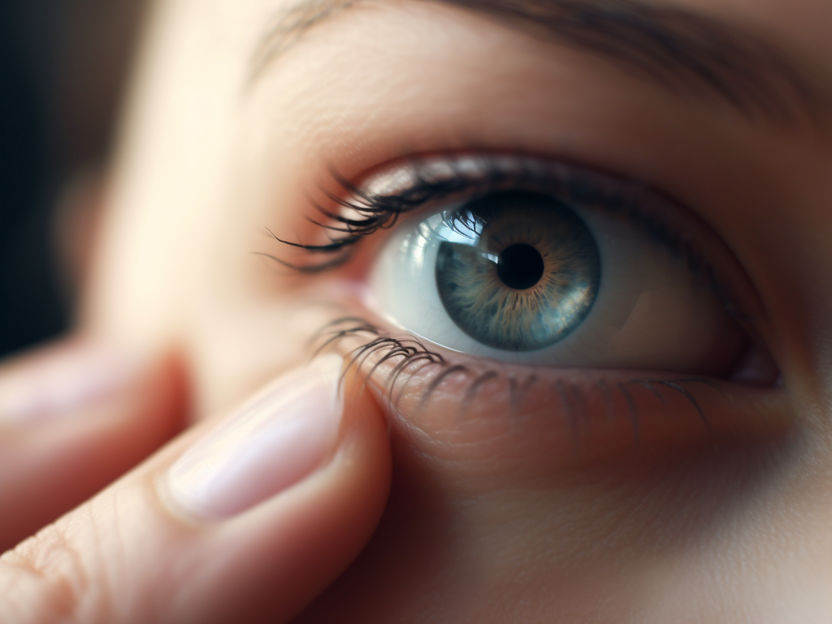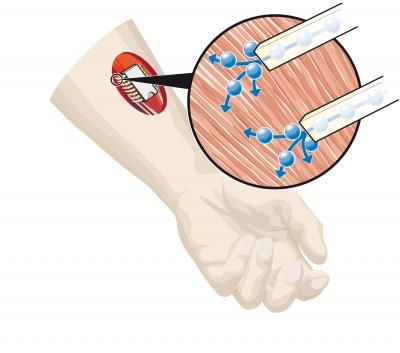Photochemical deracemization of chiral compounds achieved
The vanished mirror image
Enantiomeric molecules resemble each other like right and left hands. Both variants normally arise in chemical reactions. But frequently only one of the two forms is effectual in biology and medicine. Hitherto, completely converting this mixture into the desired enantiomer was deemed impossible. Deploying a photochemical method, a team from the Technical University of Munich (TUM) has now achieved this feat.

The allenic group of the unwanted enantiomer is much closer to the thioxanthone sensitizer and is therefore converted to the desired form.
S. M. Huber and A. Bauer / TUM
Producing active ingredients with very specific properties – antibacterial characteristics, for example – is not always so easy. The reason: many of these organic compounds are chiral. They have two mirror-image forms, so-called enantiomers.
This small difference can be consequential because the two enantiomers can have different properties. While one has a healing effect, the other might be ineffective or even cause unwanted side effects.
Saving time, energy and resources
"For a long time, researchers around the world have been seeking ways to selectively synthesize only the desired enantiomer from a racemate," explains Prof. Thorsten Bach, holder of the Chair of Organic Chemistry at the Technical University of Munich. However, this has been very difficult, since chemical reactions usually produce both molecule variants.
Together with his team, the researcher has now developed a method with which the desired enantiomer can be obtained from a racemate, the mixture of both enantiomers, in high concentrations of up to 97 percent.
Rather than painstakingly extracting the unwanted mirror-molecules from the mixture, the researchers use a photochemical reaction to transform them into the desired end product. "That saves time, energy and resources because all the molecules are used and you do not need to throw away half of them," explains Bach.
A catalyst for the "right" compounds
The secret of the transformation is a special photochemical catalyst. Originally, the thioxanthone sensitizer was developed for [2 + 2] photocycloadditions. The dye is itself chiral and therefore specifically converts only one of the enantiomers to the other. In the span of a few minutes, the equilibrium shifts in favor of the desired molecule. The undesirable mirror images disappear.
The chemists have successfully tested their new method on various molecular mixtures from the allene structural class. "We could thus demonstrate that selective and efficient catalysis to prepare enantiopure compounds from racemates is fundamentally possible," said Bach.
Original publication
Other news from the department science

Get the chemical industry in your inbox
By submitting this form you agree that LUMITOS AG will send you the newsletter(s) selected above by email. Your data will not be passed on to third parties. Your data will be stored and processed in accordance with our data protection regulations. LUMITOS may contact you by email for the purpose of advertising or market and opinion surveys. You can revoke your consent at any time without giving reasons to LUMITOS AG, Ernst-Augustin-Str. 2, 12489 Berlin, Germany or by e-mail at revoke@lumitos.com with effect for the future. In addition, each email contains a link to unsubscribe from the corresponding newsletter.
Most read news
More news from our other portals
Last viewed contents
International Center for Materials Nanoarchitectonics - Ibaragi, Japan
Covestro raises the bar and announces share buyback - Strongest quarter in company’s history
TÜV SÜD explains process maturity according to the new ISO 9001
DSM completes acquisition of PTG

Winner of the WITec Paper Award 2011 Announced
Arkema completes acquisition of Den Braven
Bayer MaterialScience planning new world-scale TDI plant at Dormagen site

Contact lenses shed microplastics - New detection method discovers microplastics released by contact lenses under sunlight
Celanese To Assess Realignment of Acetyl Intermediates Production in France and Mexico





























































